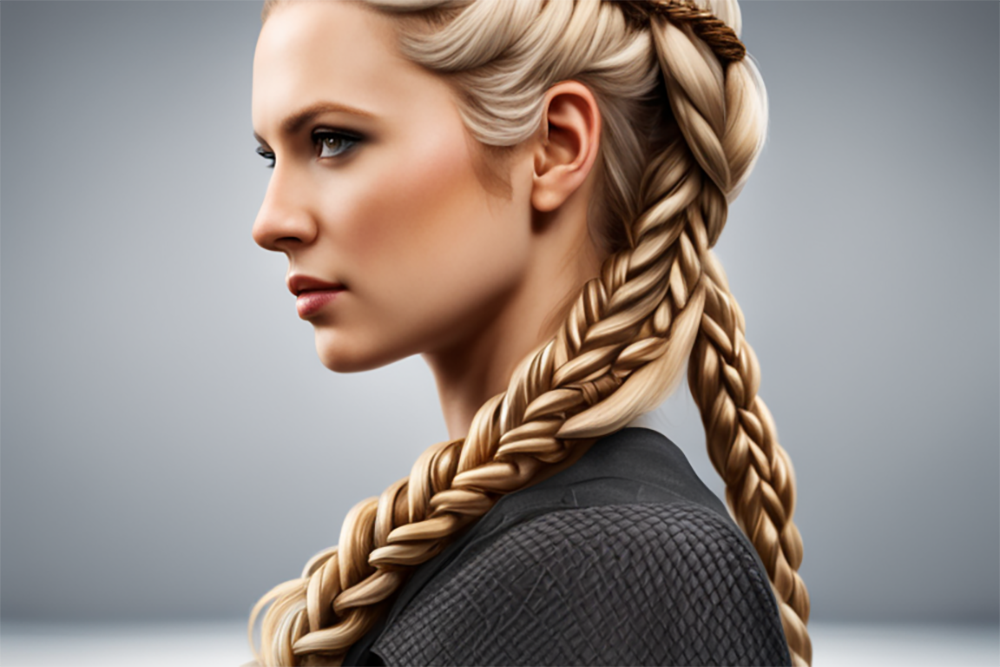Hairstyles featuring Dutch braids have been popular for centuries. This plait, which is made by braiding three sections of hair together and then beneath each other, is sometimes called an inverted French braid.
The hair in a Dutch braid is piled high on the head. They are often tightly woven and well-organized. Dutch braids are braided from the hairline all the way back to the top of the head. Depending on your tastes, you may do a single Dutch braid or a series of braids.
Although learning to Dutch braid your own hair may seem difficult at first, with practice anybody can achieve professional-looking results. Start by brushing out any knots and creating a center part in your hair. Using a little bit of hair from the top of your head, make a three-fold division. First, the right strand is crossed under the center strand, then the left is crossed under the middle strand. Pick up more hair from the side and add it to the braid, passing each new part beneath the central strand as you go. Continue braiding until you reach the nape of your neck, but don’t add any more hair this time. Wrap an elastic band around the finished braid to keep it in place.
When you want a double Dutch braid, you just do a Dutch braid on either side of your head. The boxer braid is a popular hairstyle among athletes and fitness enthusiasts who want to keep their hair out of their faces. The pleasure and versatility of double Dutch braids make them an excellent choice for anybody looking for a new look from old history.
Although learning how to do a Dutch braid may seem difficult at first, with practice you will quickly become an expert. The trick is to go slow and carefully weave one strand of hair under the others. Learn the basics of a simple braid before moving on to more advanced techniques like double Dutch braids.
If taken and maintained properly, a Dutch braid may endure for days. If you want your braids to last as long as possible, try sleeping on a satin or silk pillowcase and avoiding rough treatment. To maintain the braids’ shine and smoothness, you may also put a few drops of hair oil on them.
Incorrectly executed Dutch braids can cause harm to even the healthiest hair types. Avoid tugging the hair too firmly while doing braids to prevent breakage and hair loss. Additionally, prolonged use of braids can cause hair to tangle and mat, making it difficult to unbraid.
Dutch braids are said to have originated in Northern Europe, although their exact origins are unknown. Since the design was brought to the New World by Dutch colonists in the 17th century, it is often referred to as a Dutch braid & has been popular for decades, but its creator remains a mystery. It was likely introduced to the New World by Dutch colonists in the 17th century. It is feasible to Dutch braid damp hair, however, it can be more difficult. Braiding wet hair requires more care since it is more delicate. Use a leave-in conditioner or detangling spray to assist in the smoothing process.
The Dutch braid is a hairstyle that has been around for centuries and is still very much in vogue today. Both the single braid and the double Dutch braid (or boxer braid) are acceptable styles. They may be difficult to make at first, but with effort, anyone can get good at it. Although Dutch braids may be worn for many days without causing harm to the hair, it is still vital to avoid tugging the hair too tightly.
Dutch braids, interestingly enough, are said to have originated in Northern Europe, where the Vikings formerly resided. Dutch braids may have descended from the intricate braiding patterns popularized by Viking ladies. In addition, the style was popularized throughout the 17th century by Dutch settlers in the United States, which is why they are also known as Dutch braids. Dutch braids have a long and exciting history in the Americas, with connections to both the Vikings and Dutch immigrants.

